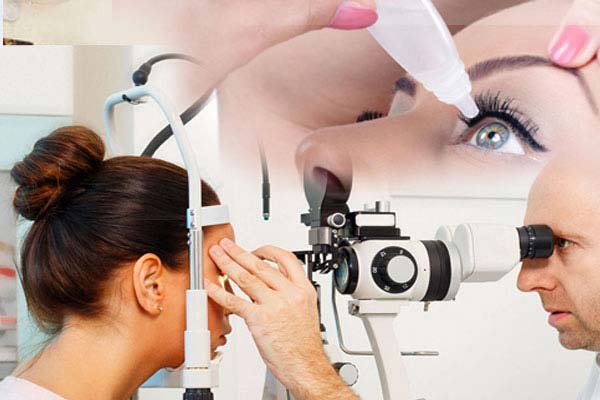Low Cost Eye Cornea Transplant Surgery in India
Organ Donation – an overview

We keep hearing about Organ Transplant a lot. Today, organ donation provides hope to innumerable people around the globe. It is equal to is gifting the most priceless gift to another human being – a renewed life; considered to be the best legacy that we can leave behind us.
We all know that with time, and other age related factors affecting, the human body surely depreciates. But there are times when specific organs get badly damaged, sometimes beyond repair, due to some diseases or genetics or some traumatic incident. With advances in the field of medicine, there are numerous kinds of life sustaining treatment options available today but a lot depends on the organ that has been affected. So if it is the Kidneys that have been damaged, Dialysis is surely a very effective option but at the same time, the remaining body has to bear the repercussions that come along with Dialysis. For example, a person undergoing Dialysis is much more prone to Cardiovascular diseases because the process of Dialysis brings down the amount of antioxidants that generally fight toxins within our body.
Video - Eye Cornea Transplant Surgery in India
Under these circumstances, Organ Donation can be an immensely helpful and life-saving option for such patients. Through Organ Donation, a person gets a renewed lease of life. It is the most extraordinary legacy to be left behind. Today, with the healthcare sector undergoing revolutionary changes, and newer and updated technologies coming up, such crucial and intricate procedures like Organ Donation have become extremely safe.
Free Consultation
Restore your vision with best Cornea Transplant Surgery India!
Giving Your Soul a Window to the World with Successful Cornea Transplant Surgery

Shelly from Australia
“Eyes are the mirror to the soul and a window to the world around you”. This is a well-known fact with because eyes are one such organ of the human body through which the world sees your innermost character and you see the world around you.
Low cost Eye Transplant in India
Thus, Organ Donation is like a silver lining for the patients, providing massive amount of hope. But unfortunately, the number of people awaiting Organ Donation is always more as compared to the number of donors because there is still a lot of apprehension in the minds of the people, who might be willing to donate.
Types of organ donation
There are principally two types of organ donation – living donation and deceased donation.
It is surely a very difficult decision, but at the same time it’s a major leap of hope for patients with end-stage organ failure. But unfortunately, the number of people awaiting organ donation is always higher than the people willing to donate.
It is a known fact that our body as a whole depreciates during the lifetime. But sometimes it happens that diseases or genetics may attack and destroy one specific organ, while the remaining body remains comparatively healthier. A lot depends on which organ is wearing down. There are various life-sustaining treatment choices before transplantation, which can be helpful to improve the condition of that particular organ. For example, when it comes to kidneys, dialysis helps a person who has damaged kidneys. But, the rest of the body has to bear the brunt due to the side effects of the treatment. A person on dialysis faces a higher risk of cardiovascular disease because dialysis affects and brings down the amount of antioxidants that generally fight the toxins within our body.
- Living organ donation
Mostly organ and tissue donations are done after the donor has died or declared brain dead. But some organs and tissues can be donated while the donor is alive. Generally, living donations are done among family members or between close friends but there are some people who become altruistic living donors by choosing to donate to someone they don’t know.
Living donation is when someone donates a portion of their liver or one of their kidneys to a patient while the donor is still alive. Living donors can donate one kidney, a lung, or a portion of the liver, pancreas, or intestine. Although these organs do not regenerate but the portion that has been donated and the portion that is remaining with the donor are fully functioning. This offers an alternative for people waiting for a deceased donor, and it increases the number of organs available, saving more lives. Some of the tissues that can be donated by living donors are:
- Skin, after certain surgeries such as an Abdominoplasty
- Bone after knee and hip replacements
- Healthy cells from bone marrow and umbilical cord blood
- Amnion, donated after childbirth
- Blood, including white and red blood cells, platelets, and the serum that carries blood cells throughout the circulatory system
- Deceased organ donation
It must be kept in mind that, deceased donation is only possible after all attempts to save the patient’s life have been tried, and brain death has been declared. Even though the person, who is brain dead, is technically dead, but the organs would be still functioning and hence appropriate for organ donation. The donor’s organs are surgically retrieved and stored in special chemical solutions until there is a need for those organs for transplantation. Such a donor can donate kidneys, liver, lungs, heart, pancreas, and intestines. In 2014, hands and faces were added to the organ transplant list.
EYE TRANSPLANT – AN OVERVIEW
Eye Transplant in India is a misnomer. When someone says that they are getting an “Eye Transplant” they are most likely to receive a donor cornea known as corneal transplant, keratoplasty or corneal grafting. The cornea is clear front part of the eye that helps focus the light so that you can see. If the cornea gets damaged then you might need to have it replaced. Currently there is no way to transplant an entire eye; however an ophthalmologist can transplant a cornea. This is because our eyes are like cameras that capture images, but it is our brain which processes and sees the image. Hence it is crucial that our eyes remain connected to our brains by the optic nerve that sends visual signals from the eye to the brain, where they are interpreted as images. Send your query to know the Eye Transplant Cost in India.
Eye is a complex organ connected to the brain by the optic nerve that sends visual signals from the eye to the brain where they are interpreted as images. The optic nerve is only between 1.3 and 2.2 inches long and less than one-fifth of an inch wide at its widest point. But despite its small size it is made up of more than a million tiny nerve fibers. If these nerves are cut then they cannot be reconnected. The surgeons cannot transplant a whole eye because even if they could implant the eye into the socket still the eye would not be able to transmit signals to the brain through the optic nerve, thus the patient would not be able to see. Fill up the enquiry form to know the Average cost of Eye Transplant in India.
About Cornea Transplant
A healthy, harmoniously functioning, clear Cornea is a must for good vision but if our Cornea is damaged due to any eye ailment or eye injury, it can become swollen, scarred and severely affect and distort our vision.
A Cornea Transplant, also referred to as Keratoplasty, is a surgical procedure to replace part of a patient’s cornea with corneal tissue from a donor. The cornea is the transparent, dome-shaped surface of our eye that plays an indispensable role behind our eye's focusing power. A Cornea Transplant can re-establish vision, lower the pain and enhance the appearance of a damaged or diseased cornea.
Most of the Cornea Transplant surgeries are successful. But like other transplant surgeries, Cornea Transplant also carries a small risk or complication that is rejection of the donor Cornea. A Cornea Transplant is most often used to restore vision to a person who has a damaged cornea. A cornea transplant may also relieve pain or other signs and symptoms associated with diseases of the cornea.
There are many eye conditions that can affect the clarity of the cornea and put the patient at superior risk of suffering from a Corneal failure. A Corneal Transplant is recommended for eye conditions such as:
- Trichiasis, where eyelashes turn inward and cause friction against the surface of the eye, causing scarring and loss of vision
- Scarring caused due to infections, such as eye herpes or Fungal Keratitis
- Hereditary conditions such as Fuchs' Fystrophy
- Clouding or swelling of the Cornea
- Corneal ulcers
- Eye disorders such as Advanced Keratoconus
- Thinning of the Cornea and irregular corneal shape like that is Keratoconus
- Rare complications from LASIK surgery
- Chemical burns caused to the Cornea or damage from an eye injury
- Excessive swelling or Edema of the cornea
- Graft rejection following a previous Corneal Transplant
- Corneal failure that has occurred due to complication from a Cataract surgery
Corneal Transplant in India
Corneal transplant in India is a procedure that is more than a century old though of course it has been modernized as medical technology has advanced. A cornea which is scarred or swollen can cause blurred vision or glare. Your ophthalmologist may recommend a corneal transplant if your cornea cannot be healed or repaired. Corneal transplants allow the patients to regain good vision after their cornea is injured or affected by disease. During this procedure, the damaged or unhealthy cornea is removed and replaced with clear donor corneal tissue. Also called as keratoplasty, this procedure can bring back vision, lessen the pain, and improve the look of your damaged cornea. Contact us to know the Corneal Transplant Success Rate in India at the Top Eye Hospitals in India for Corneal Transplant.
Who Needs Corneal Transplant?
The cornea has to be clear to allow the people to see properly. However there are numerous problems that could damaged the cornea and affect the vision. The light rays passing through a damaged cornea can get distorted and change your vision. Hence corneal transplant is needed by people with the following eye problems:
- Cornea scarring due to infection and trauma
- Keratoconus, a degenerative condition can damaging it due to which cornea becomes misshapen or thin
- Corneal ulcers or sores from an infection
- Some other corneal conditions which are inherited such as Fuch’s dystrophy, Lattice dystrophy and many others
- Thinning, clouding or swelling of the cornea
- Problems caused by earlier eye operation
Cost of Eye Transplant Surgery in India
The average Cost of Eye Transplant Surgery in India is around Rs.2,10,000 ($2,600) to Rs.2,60,000 ($3,200). The cost depends on several factors like the type of procedure, surgeon's fees, hospital charges and other associated costs.
List of Best Hospitals for Eye Transplant in India
- Fortis, Delhi
- Apollo Hospital, Delhi
- Max Healthcare Hospital, Delhi
- Blk Super Speciality Hospital, Delhi
- Bharti Eye Hospital, New Delhi
- Medeor Hospital, New Delhi
- Sir Ganga Ram Hospital, Delhi
- Eye Q Hospital, Gurgaon
- Medanta Hospital, Gurgaon
- Artemis Hospital, Gurgaon
- Wockhard Hospital, Mumbai
- P D Hinduja Hospital and Medical Research Centre, Mumbai
- Kokilaben Dhirubhai Ambani Hospital, Mumbai
- Lilavati Hospital, Mumbai
- Shroff Eye Hospital, Mumbai
- Jaslok Hospital, Mumbai
- Karkhanis Super Speciality Hospital, Thane, Maharashtra
- KIMS Hospital, Hyderabad
- Centre for Sight Superspecialty Eye Hospital, Hyderabad
- L.V.Prasad eye hospital - Hyderabad
- Manipal Hospital, Bangalore
- Narayana Nethralaya Eye Hospital, Bengaluru, Karnataka
- BGS Gleneagles Global Hospital, Bangalore
- Narayana Multispeciality Hospital, Bangalore
- Sankar Netralaya – Chennai
- Sri Ramachandra Medical Centre, Chennai
- Aravind Eye Hospital - Madurai
- Paras Hospital, Patna
- Sarvodaya Hospital, Faridabad
- Aster Medcity, Kochi Kerala
List of Top Eye Transplant Surgeons in India
- Dr. Aditi Krishna Agarwal
- Dr. Harshavardhan Ghorpade
- Dr. Bharath Kumar
- Dr. Rajesh Fogla
- Dr. Srilathaa Gunasekaran
- Dr. Sudipto Pakrasi
- Dr. Sonica Gupta
- Dr. Parul Sharma
- Dr. Amar Karkhanis
- Dr. Jitendra Kumar Singh Parihar
- Dr. Udbhav Dorwal
- Dr. Srilathaa Gunasekaran
- ORGAN TRANSPLANTS PERFORMED THIS YEAR- 73
- PATIENT SATISFACTION- 97%
- DEDICATED SUPPORT PHYSICIAN FOR EACH PATIENT
- INTERNATIONAL MEDICAL CLINICS- 6 EVERY YEAR
- CHARITY SUPPORT TIE UPS FOR ECONOMICALLY POOR PATIENTS
Send your query to know the Corneal Transplant Cost in India with the Best Corneal Transplant Doctors in India.
Am I Eligible For Corneal Transplant Surgery?
A person should be in good general health in order to get corneal transplant surgery. The blood pressure, blood sugar levels and other functions of the body should be normal. The corneal transplant surgery is much less complicated as the transplant of other organs such as the liver, heart, and kidney. Hence there is not much that keeps a person from opting for this procedure. Get in touch with us to request appointment for the low Corneal Transplant Surgery Cost in India with the Best Corneal Transplant surgeons in India.
Phone Numbers Reach Us India & International:
+91 9765025331
Before the Procedure
A thorough eye examination is done before the surgery during which the doctor will check for conditions that may cause complications post surgery. Measuring the eyes is also necessary to determine the size of the donor cornea. You will be asked to stop taking certain medicines or supplements before the corneal transplant surgery. Some eye problems such as infection and inflammation of the eyes which can reduce your chances of successful corneal transplant need to be treated before the surgery. You will have to use antibiotic drops in your eye the day before your transplant to help prevent an infection. Most of the times, these surgeries are done as outpatient procedures under local anesthesia. This means you'll be awake but woozy and the area is numb. You'll be able to go home the same day.
You will need to stop eating and drinking most fluids after midnight, the night before surgery. You can have apple juice, water, and plain coffee or tea (without cream or sugar) up to two hours before surgery. Do not drink alcohol 24 hours before or after surgery. On the day of your surgery, do not put creams, lotions or makeup on your face or around your eyes.
About the Procedure
In most cases, the surgery is done on an outpatient basis – you come to the hospital or surgery centre a few hours prior to surgery and leave that same day- generally a few hours after the surgery.
Before the transplant, you'll be given a sedative to help you relax and a local anaesthetic to numb your eye. Local or general anesthesia can be used for this procedure. The decision as to which type is used should be discussed with your surgeon preoperatively and is based on your age, general health, length of surgery, and your doctor’s preference and your anxiety level.
The entire procedure is done under a microscope. A circular cookie cutter-like instrument, called a trephine, is used to remove the center of the diseased cornea. your surgeon cuts through the entire thickness of the abnormal or diseased cornea to remove a small button-sized disc of corneal tissue. A “button” of similar size is cut from the donor cornea. This donor tissue is then sewn in place with extremely fine nylon sutures. At the conclusion of the procedure, a patch and shield are applied to protect the eye.
During the procedure, only the central portion of the cornea is involved. The surgeon excises an appropriate circular disc of the patient’s cornea and replaces it with a similarly sized disc of donor cornea, which is then sutured into place.
But with some types of cornea problems, a full-thickness cornea transplant isn't always the best treatment. Partial-thickness (lamellar) transplants may be used in certain situations. These types of procedures include:
- Replacing the inner layer of the cornea – This procedure, called a deep lamellar transplant, replaces only the innermost layer of your cornea's five layers. A small incision is made in the side of your eyeball to allow for removal of your cornea's inner layer without damaging the outer layers. A donor graft replaces the removed portion.
- Replacing the surface layers of the cornea – The outer layers of the cornea that have been damaged by certain diseases and conditions can be replaced using a procedure called surface lamellar transplant. These surface layers, too, can be removed and replaced with a donor graft.
There are five layers in the cornea and all these are not replaced all the time during the corneal transplant. The different types of corneal transplant procedures include the following:
- Full Thickness Corneal Transplant or Penetrating Keratoplasty (PK)
During this procedure all the layers of the cornea are transplanted. The surgeon sews new cornea onto your eye and uses stitches which are thinner than hair. This procedure is required if you have a severe cornea injury or bad bulging and scarring. It has the longest healing time. - Partial Thickness Corneal Transplant or Deep Anterior Lamellar Keratoplasty (DALK)
During this procedure only some of the layers of the cornea are transplanted. The surgeon injects air to lift off and separate the thin outside and thick middle layers of the cornea, then removes and replaces only those. People with keratoconus or a corneal scar that hasn't affected the lower layers may have this procedure. The quality requirements of the donated cornea aren't quite strict. The healing time of this procedure is shorter than a full thickness transplant as your eye itself isn't opened up so it's unlikely the lens and iris could be damaged. Also there is a less chance of an infection inside your eye. - Endothelial Keratoplasty
Is a type of surgery done to help Fuchs' dystrophy and other medical conditions. Descemet's stripping endothelial keratoplasty (DSEK or DSAEK) is the most common type of endothelial keratoplasty in which the surgeon removes the endothelium, a mere one cell thick and the Descemet membrane just above it. Then he/she will replace them with a donated endothelium and Descemet membrane still attached to the stroma, the cornea's thick middle layer to help him/her handle the new tissue without damaging it. Descemet's membrane endothelial keratoplasty (DMEK) transplants just the endothelium and Descemet membrane, no supporting stroma. The donor tissue is very thin and fragile, so it's harder to work with. However the healing from this procedure is usually quicker.These procedures are good options for people with cornea damage in the inner layer only as recovery is easier.
Tissue Availability
Corneas for transplant come from individuals who have donated their eyes for use after their death, for the benefit of others. Donor corneal tissue can be used up to maximum of 4 days after the death of the donor depending on the modality of preservation which includes screening for AIDS. With a few exceptions, donor tissue up to age seventy years is usable. Factors such as sex, previous vision of the donor, color of the iris, have no influence on the final outcome of the surgery. Anyone wishing to be an eye donor should call the nearest Eye bank and pledge the same.
Recovery
You'll probably wear an eye patch for at least a day, maybe 4, until the top layer of your cornea heals. Your eye will most likely be red and sensitive to light. It might hurt or feel sore for a few days, but some people don't feel any discomfort. You will be prescribed eye drops to bring down inflammation and lower the chances of infection and also other medicines to help with pain. The doctor will check your eye the day after surgery, several times during the following couple of weeks, and then a few more times during the first year. You'll have to protect your eye from injury after your surgery. Follow your doctor's instructions carefully.
After a full thickness corneal transplant, patients have to stay for one night at the hospital. While patients can go home the same day if it is a partial transplant. In case if you had endothelial keratoplasty then you will be asked to lie on back as much as possible during the first few days after surgery.
If your cornea doesn't get any blood then it heals slowly. If you needed stitches, your doctor will take them out at the office a few months later.
Often corneal transplant surgeries are successful but there are few risk factors such as
- Increased risk of cataracts
- Infection of the eyes
- Increase of pressure inside the eye ball called as glaucoma
- Recipient’s body can reject the new cornea
- Problems with stitches used to attach the donor cornea
- Swelling in the cornea
Results
Most people who have a corneal transplant get at least part of their vision restored, however, with each different situation it could take a few weeks and up to a year for your vision to improve fully. Your eyesight might get a little worse before it gets better. Once you are back home from the hospital after surgery, you need to take special care of the eyes by keeping in mind the following points:
- Don’t rub your eyes
- Avoid strenuous exercise or weight lifting for a few weeks
- Don’t allow smoke or dust to enter eyes as they can irritate your eyes
- You can get back to work within two to three weeks after surgery if your job does not involve physical strain. If your job involves manual labor then you need to wait for three to four weeks.
- Avoid contact sports till doctors support otherwise
- Wear sunglasses if you feel sensitive to light
- Don’t drive till the doctor gives you the go-ahead
- Do not allow water to enter your eyes for one month
Your glasses or contact lens prescription may need adjustment to include astigma corrections because the transplanted tissue won't be perfectly round. After the first year, you should see your eye doctor once or twice every year. The donated tissue usually lasts a lifetime.
Why opt for India for this Procedure?
There is no doubt about India’s popularity as a medical tourism destination owing to the drastic evolution of the Indian healthcare arena, over the years, making India a highly matured country. The Best Corneal Transplant Hospitals in India has the most progressive facilities and the Top Corneal Transplant Specialists in India are highly skilled with immense experienced. Uncompromised quality of services, supreme care and cost-effectiveness are the two key factors that attract people across the globe. If quality comes at an affordable Cost of Corneal Transplant in India then it is an unbeatable advantage. The perfect confluence of highest quality and cost effectiveness is unique for India. There are many ‘centres of excellence’ in India, proffering the best of health amenities to patients around the globe.
Phone Numbers Reach Us India & International:
+91 9765025331
Our Success Stories
Mr.Abba Mehmoud Musa, Sudan
Sudan Patient's Successful Liver Transplant Journey to India
Many a times due to certain reasons like excessive alcohol, fat deposit or any other complication, the liver gets damaged...
Read More
Mr. Sartaj Musumonov, Uzbekistan
Success Story of Bone Marrow Transplant Surgery in India
It is extremely difficult to understand the medical situation if one is not from a medical background. Here is one more...
Read More
Mr. Abubakar Abdullahi Jam, Nigeria
A New Phase of Life after Kidney Transplant Surgery India
Mr. Abubakar Abdullahi Jama was mournful due to high constant fever, diarrhea, and vomiting. He felt that it was normal...
Read More
Tags
FAQ's Eye Transplant in India
- 1.Why should eyes be donated?
-
Donated human eyes and the corneal tissue are required to preserve and restore the sight and are used for transplantation, research and education. More than 90 percent of the 41,300 cornea transplant operations are performed each year successfully to restore vision in persons suffering from corneal blindness.
- 2.Who can be eye donors?
-
Eye donors can be of any age group or sex. Even cataract and poor eye sight do not prohibit you from becoming a donor. All you need to do is take a simple pledge to donate the eyes after death. Though taking a pledge during one's lifetime itself is a noble deed, however, it requires the support of the friends or relatives to carry out the wishes of eye donation of the deceased. People using spectacles and those who are diagnosed with diabetes and hypertension can donate their eyes. Prospective donors should indicate their intention on the donor cards and the driver's licenses.
- 3. Who cannot donate their eyes?
-
Death due to unknown causes. Those who die due to infections such as syphilis, rabies, septicemia, infectious hepatitis, and AIDS, cannot donate their eyes.
- 4. Can the next of kin consent to a donation if the deceased person has not signed an eye donation form?
-
Yes, the relatives of the deceased can decide to donate the eyes of their beloved one.
- 5. Whom should we contact to donate eyes?
-
It is significant to get in touch with your nearest eye bank at the earliest since the eyes need to be removed within six hours after death.
Few things to remember:
- Keep the eyes of the deceased closed and cover them with moist cotton
- Switch off the ceiling fan directly over the deceased person
- Apply antibiotic eye drops periodically in the deceased's eyes if possible to reduce the chance of any infection.
- If possible, raise the head of the deceased by about six inches to reduce the chances of bleeding at the time of removal of the ey
- 6.Is there a need to match blood for cornea transplantation?
-
No, matching is not necessary. However, 5ml of blood is collected from the donor to test for diseases like jaundice, AIDS, and sexually transmitted diseases.
- 7. Are there any religious conflicts in eye donation?
-
There are no religious conflicts on eye donation. Since eye donation gives a gift of sight to other, it is consistent with beliefs and attitudes of all major religious and ethical traditions.
- 8. Will eye donation cause delays in funeral arrangement?
-
No, the eye donation has to be performed within six hours and leaves no disfigurement that will interfere with common funeral practices.
- 9. Is the whole eye of the donor transplanted?
-
No, only the cornea of the donor is transplanted.
- 10. Can a person who is blind due to retinal or optic nerve disease donate his/her eyes?
-
Yes. It is possible that a person who is blind due to retinal or optic nerve disease to donate his/her eyes provided that the cornea of the donor is clear.
- 11.Can a living person donate his eyes?
-
No. Donation from living persons is not accepted.
- 12.Will the recipient be informed of the donor's details?
-
No. The gift of sight is made anonymously and strictly preserved by law.
- 13. Is there any delay in funeral arrangements?
-
No. As the eye tissue is procured within hours of death and the procedure of eye donation takes only 20-30 minutes, so families may proceed with funeral arrangements as planned.
- 14. Will eye donation affect the appearance of the donor?
-
No. Great care is taken to preserve the appearance of the donor. No one will be able to notice that eyes have been donated. Families may even hold a viewing and can have an open casket ceremony.
- 15. Will the donor's family pay or receive any fees?
-
No. It is illegal to buy and sell human eyes, organs and tissues. Any cost associated with the eye procurement is absorbed by the eye bank.
- 16. Will the quality of medical care be affected if one is known to be a donor?
-
Absolutely not. There are strict laws which protect the potential donor. Legal guidelines should be followed before death can be certified. Also a physician certifying a patient's death cannot be in any way involved with eye procurement or with the transplant.
- 17. What are the benefits to a donor family?
-
In addition to fulfil the wishes of their loved ones, eye donation provides comfort to a grieving family. Just knowing that a small part of our loved one is going in life by helping someone see this world is a consolation and something to hold on to in times of sorrow.
- 18. What are the preparations the recipients do for Surgery?
-
Recipients should do the following while preparing for the surgery:
- Make arrangements for transportation to and from the hospital.
- Request sick leave from work.
- Find a helper for household chores.
- Do not eat or drink after midnight on the night before surgery.
- 19. Will the natural eye color change after surgery?
-
No. The iris (the colored part of the eye) is not affected by a corneal transplant.
- 20.What are the warning signs of rejection?
-
The following are the warning signs of rejection:
- Increased redness, especially around the new cornea
- Decrease in vision
- Increased sensitivity to light
- Persistent eye pain













